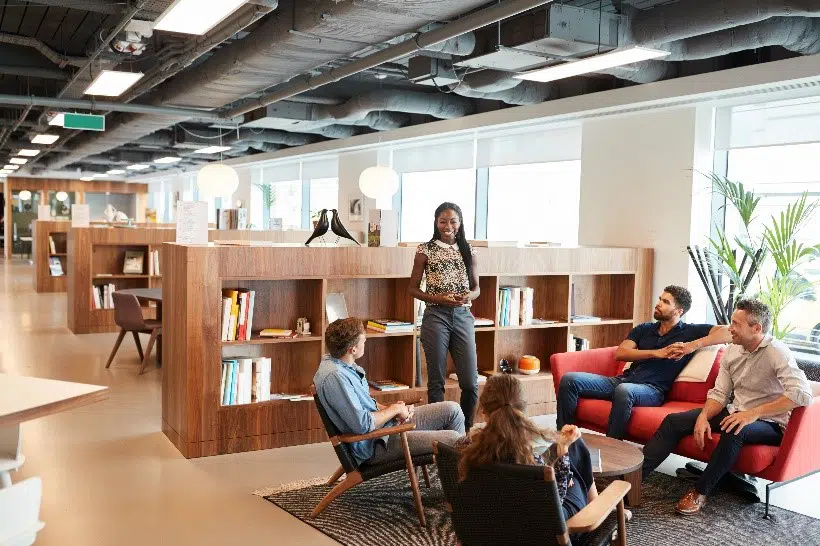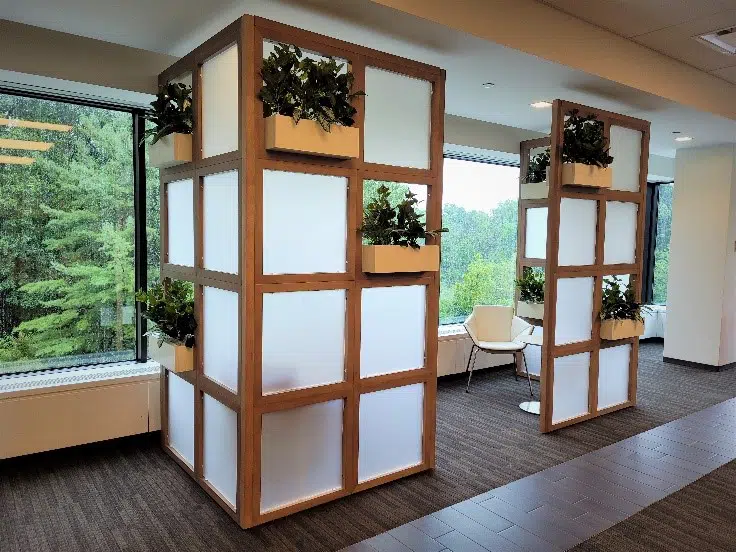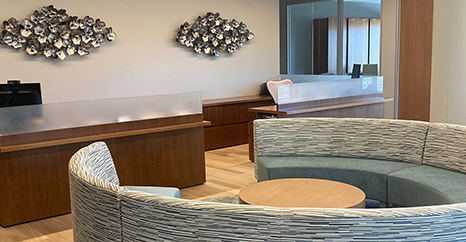2021 may be in our rearview mirror, but some of its commercial design trends sure aren’t! Here are our top three insights on what trends we will see more of in 2022:
Open/Collaborative Spaces
Open workspace design has been an ongoing trend for some time. Company space planners like capitalizing on the trend to encourage employee collaboration and creative synergy. Balancing that benefit with the need for privacy, distraction-free working environments, and maintaining employee comfort is a challenge. The COVID-19 pandemic has further inflamed that difficulty. Even without a 6-foot distancing requirement, employees don’t want to feel like they are working on top of each other, for their safety and performance. Offering flexible and versatile space provides options for everyone to utilize what they feel most comfortable with.
Acoustical Solutions
With open space comes acoustical challenges. Acoustics are the way sound interacts with the surfaces in its environment. How the sound acts depends on the materiality of the surface – bouncing off or being absorbed. A material’s absorption can be measured by mathematically calculating its Noise Reduction Coefficient (NRC). A material with an NRC of 0.0 will not absorb noise at all, but a material with an NRC of 1.0 will absorb the noise waves that touch it. Space planners are seeking solutions to amplify sound in space where they want it to carry and minimize it where their teams need privacy. Using opportune materials and artistic installations can help work with acoustics instead of against them as well as overcome frustrations.
Biophilic Design
What started as a design trend in schools, Biophilic Design is growing in popularity in commercial spaces. It is an approach that capitalizes on the innate human need for contact with nature to benefit those using an indoor space. Connecting with nature has many studied and proven benefits like helping manufacturing employees be more productive, patients recover from major illness and surgery faster, and students score higher on tests and miss fewer days of school. Biophilic Design incorporates natural features, shapes, patterns, light, and space in tactile features, visual elements, and subconscious influences. To achieve Biophilic Design, designers layer nature imagery, materials inspired by nature, and layouts that mimic natural landscapes into design.
Our overall takeaway is that commercial space planners are pushing the envelope to look for functional workspaces that help their employees and customers feel safe and happy. Happy people are productive employees, and having an enjoyable workspace is a big contributing factor. Seeing these design trends come to life takes a skilled and knowledgeable creative team who will listen to your needs and provide solutions that will realistically fit within your budget and timeline. Take a look at some of the work we have done and lean on TeamPAR to ease your burden. We will handle your project from start to finish – planning, finish material selections, contractor bidding, demolition, furniture movement, flooring, painting, signage, and functional décor. Reach out today so we can be your trusted partner and give you the space you deserve.




